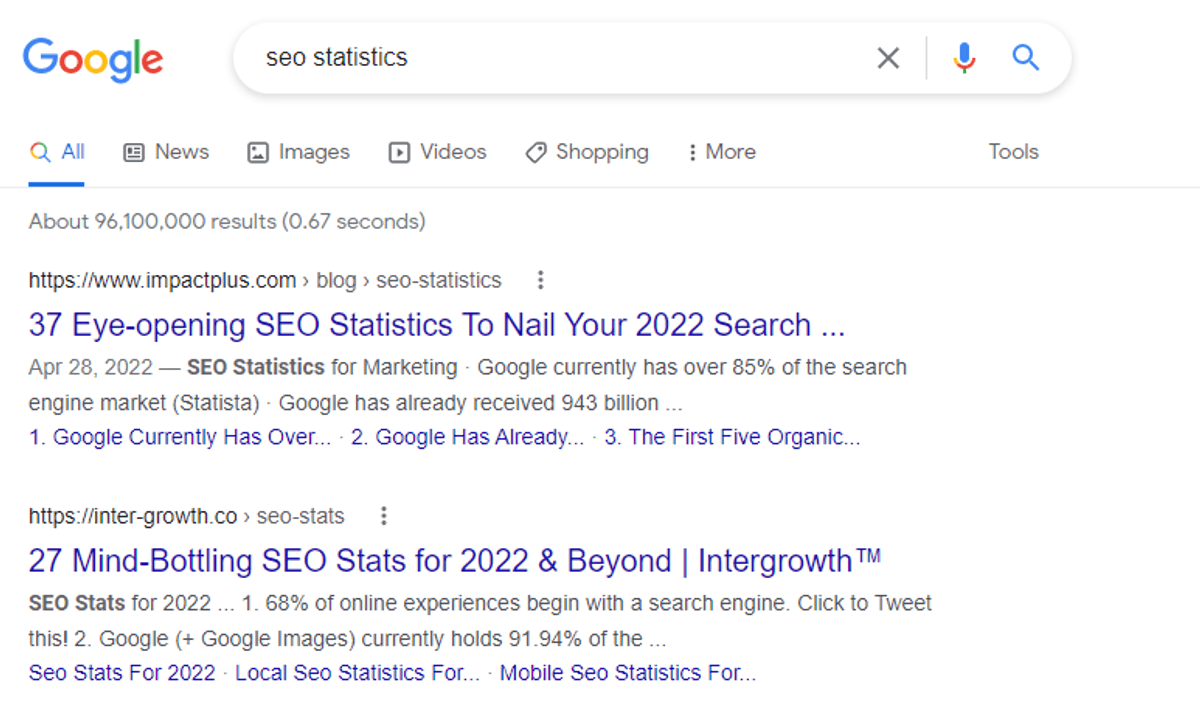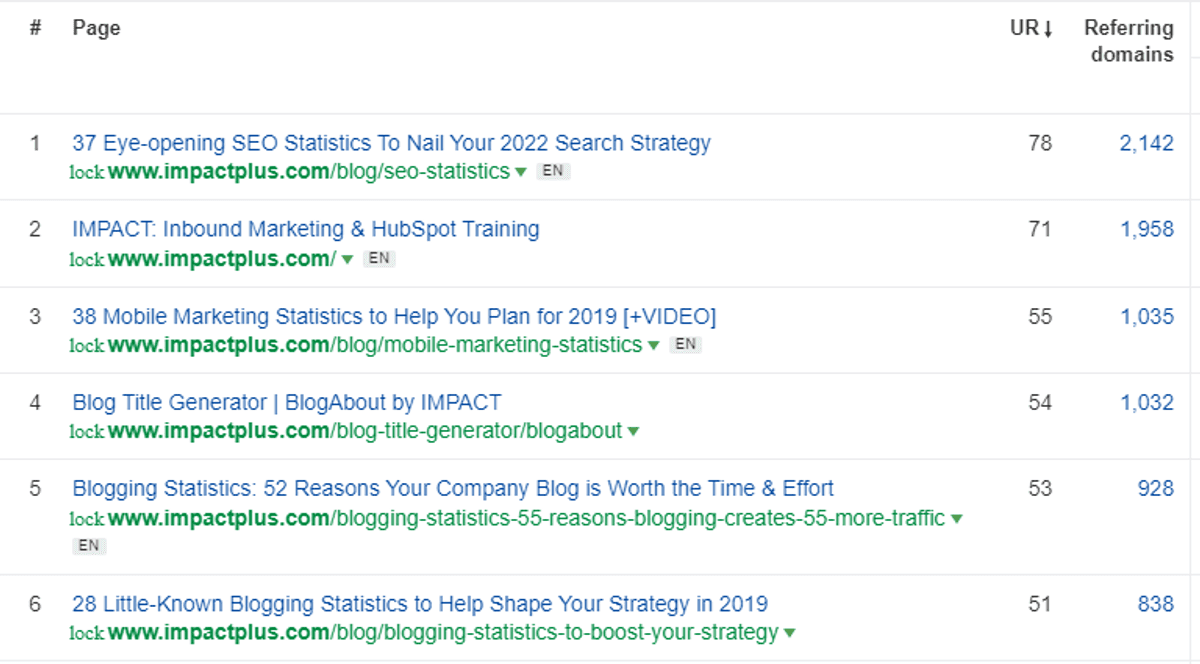
9 Natural Link Building Tactics For Backlinks on Autopilot
Natural link building is a somewhat contradictory phrase.
Think about it...
Natural links are those generated organically without any input from the website owner; but link building is an active process whereby website owners go out and try to build links.
Does this mean there’s no such thing as natural link building? Well, not quite.
While natural links occur organically, there are still plenty of ways you can encourage people to link to your content—even if you aren’t actively contacting other website owners to ask them to link to you.
Key Takeaways
Natural links are those built organically without any link building outreach.
Google loves natural links, as they are completely white hat.
Natural links are great for website owners too, as they can get links without actively link building.
Attracting white hat links is tough—you need great content and an existing audience.
Statistics pages, original research, strong opinions, and free tools are all good ways to attract links.
What Are Natural Backlinks?
Natural backlinks are those that are generated organically. They occur when people link to your website without you performing any kind of outreach.
Search engines love this type of link because they are the purest form of recommendation—the writer added the link to their article simply because they enjoyed it.
This is important because the Google algorithm considers quality links as a vote of confidence in a piece of content. The more votes a page has, the more likely it is to be a high-quality and authoritative resource on a topic.
The alternative to natural link building is outreach-based link building. This is when you proactively contact other websites with the explicit goal of generating links.
Why Do You Need Natural Links?
You need natural backlinks because they show Google that other people like your content. More natural links lead to higher rankings when combined with an effective content strategy.
Optimizing for natural links is also a great way to scale your link building efforts. You’ll attract backlinks without spending time on outreach to convince people to link to your website.
Natural links are also completely free. You don’t have to pay for either the links or for people to build them for you.
Additionally, having many organic links keeps your link profile looking natural. You’ll have a wider variety of links than if you just ran a particular type of link building campaign, and your anchor text profile won’t appear over-optimized.
The Issue with Natural Link Building
There is one major issue with natural links: they are super hard to generate.
There is a ton of content out there and getting yours to stand out without taking proactive steps to promote it is extremely difficult.
Attracting links naturally is doubly hard if your website doesn’t already have an audience. After all, people need to see your content before they can link to it.
Do You Need to Generate Incoming Links Quickly? 🏃
If so, then natural link building probably isn’t for you. Even if you do have good organic traffic, it can still take time for people to link to your content.
That’s because most people who visit your site do so to read your content, not link to it. Outreach-based strategies typically result in a higher volume of links in far less time.
The 2 Must-Haves for Natural Link Building
To attract natural links, you need to have both:
Extremely high-quality, original content.
An audience who will see this content.
The first point is important because if your content isn’t great, no one will link to it. And in many cases, people still won’t link to quality content unless it offers something new that other content doesn’t.
The Exception to the Above Rule
The one alternative to this is if you have an authoritative website that generates a ton of traffic.
In this case, you will likely pick up natural links simply due to the sheer number of people who view your content. Of course, you could potentially generate even more links by increasing the quality or originality of your articles.
The good news is that there are ways to get eyes on your content without engaging in blogger outreach. And there are also types of content you can create that is more likely to result in links than others.
9 Ways to Get Your Content Seen Without Outreach
Each of these strategies increase the chances of you generating links by increasing brand exposure.
1) Invest in Paid Ads
Counter-intuitively, Paid ads are an easy way to send your content to the top of Google. You can use this to generate backlinks to your content by bidding on terms that people search for when looking for content to link to.
Ahrefs did a test where the company created a statistics page and then promoted it via paid search ads.
The experiment generated links from 11 quality referring domains for $1,245 of ad spend, or $113 per link.
To get an idea of how much this might cost for your industry, see this guide to Google ads pricing.
2) Compile Statistics Pages
Statistics pages are great for generating natural backlinks. The reason why is because writers love using statistics in articles. And they will often search on Google using terms like “[keyword] statistics” when looking for data.

If you can create a page of statistics on a particular topic that ranks on Google for these terms, writers will often link back to your page to back up their point.
There are many examples of people building links using this strategy. The image below shows that Impact Plus has generated thousands of links using this type of page.

Of course, some of these links may have come through outreach, but it would be reasonable to assume that many have been created organically through people finding the page in the search results.
There are some downsides to statistics pages. The main one is that these pages work best when they rank on Google.
But these search terms are often highly competitive. If your site doesn't have existing authority, it can be hard to rank for these terms unless you can find some super niche topics.
3)Optimize your content for Google.
A good SEO strategy can generate a ton of website visitors. The more search traffic you have, the more people will see your content and the more likely people are to link to it.
You can even target specific terms that are most likely to generate links, for example, searches for statistics or research.
The issue is that ranking on Google is hard if you don’t have links in the first place. Especially when it comes to competitive terms.
You’ll need to use an SEO strategy that targets low-competition keywords until you can rank for better terms. This means that while targeting organic SEO for links is a good long-term strategy, it’s not effective if you want links fast.
4) Share your content on social media.
Sharing your content on social media can get your brand in front of a large number of people.
This is an effective strategy if you already have an audience that you can share your content with. In this case, pointing people towards your blogs can result in links. You just need to create the type of content people like to link to (more on that later on).
The issue is this: if you don’t have an existing audience, it can take a long time to build one.
5) Share your content on forums or communities.
Another good way to get your content in front of people is to share it in relevant forums or communities.
Choosing the right community can get your work in front of a ready-made audience of people who might be interested in your brand. And you don’t have to do any of the work to build an audience.
This makes it a good strategy if you don’t have an audience or any Google authority. Start by heading to Reddit or Quora to find groups on topics related to your niche.
6) Contribute to newsletters.
The number of people starting newsletters seems to have skyrocketed over the last year or so.
But creating regular newsletter content is a grind, and many creators are willing to publish content from other people.
If you create content for other people’s newsletters, you’ll build brand exposure which can lead to links.
Start by searching for newsletters in your niche. Then contact them about the opportunity to write some content for their newsletter.
If there are many opportunities, consider the number of subscribers they have and their open rate to find the best options.
You could increase the chances of your pitch being accepted by offering something in return. For example, you could add newsletter signup forms to some of your articles.
7) Perform original research
If you don’t think you can rank for statistics-related keywords, then doing original research is another way to generate natural links. It’s typically more time-consuming to perform your own research than it is to curate other data from the web, but the rewards can be worth it.
The key is to choose a topic that people are likely to want to link to. An easy way to find out if this is the case is to search on Google to see the type of research your competitors’ are creating.
Many brands use this type of link building strategy. Below you can see that Ahrefs’ 2020 original report on Google traffic is currently its eighth most linked-to page, while its study on how long content takes to rank on Google is its tenth most linked-to page. Between them, they have links from over 5,000 domains.

Once you’ve created your report, you need to get it in front of people.
At this point, we would highly recommend performing active outreach to share your report. You can do this even if you have an active audience on another platform.
While any backlinks you generate during this process won’t be 100% organic, they will still be valuable.
Natural Link Building vs. Linkable Asset Campaigns
Natural link building has a lot in common with linkable asset campaigns in that they both involve creating content that people are likely to want to link to. The difference is that with a linkable asset campaign, you actively reach out to other websites asking for links.
It’s a good idea to run both types of campaigns simultaneously. You can build content with the goal of attracting natural links, while still actively promoting it.
8) Write articles with thought-provoking opinions.
Another way to generate backlinks is to write content with strong and unique opinions. If people find the blog post interesting or thought-provoking, they may link to it.
This can be a good strategy in the early days of a website when your content doesn’t rank on Google.
This strategy is best used if you have an audience on another platform like Twitter or LinkedIn. It’s especially useful if people in this audience create content themselves as then they are more likely to link to it.
Animalz.co does this well. Many of their blog posts have a relatively high number of backlinks because they offer interesting takes on topics related to content marketing. You can see some examples of this below.

9) Create free tools
Creating a free tool is another good way to generate links. You just need the tool to be useful enough for people to share it.
For example, Carbonfootprint.com have a free carbon calculator that has links from 3,800 other websites!
This is the perfect kind of tool that could attract a ton of free links on autopilot.

Bonus Tip: Search for Content That Already Generates Links
If you’re still unsure about the type of content you should create to build links to, there’s a simple workaround.
Just discover content that already generates links and then create similar pieces.
There are two ways you can do this:
Use an SEO tool to look at your website and see which pages have links. You can then create similar pages.
Use an SEO tool to see which pages on your competitors' websites attract links, and then create similar pieces of content.
The idea behind both these strategies is that they show you the exact type of content that already generates links. And if something has worked in the past, it may also work in the future.
Active Link Building Helps Build Natural Links
The ironic thing is that building links actually helps attract natural links. This is because link building is all about promoting your content and increasing its ranking potential.
And the more links you build, the more people will see your content—whether through Google or your brand appearing on other websites. This increases your chances of earning natural links.
If you want to learn about more active forms of link building, check out our guide on how to launch high-authority backlinks.

